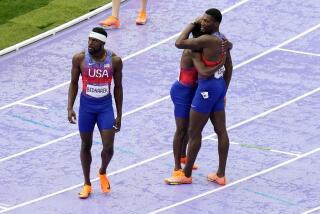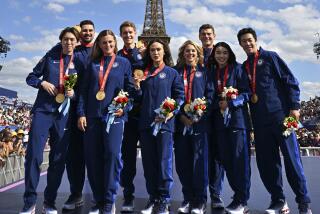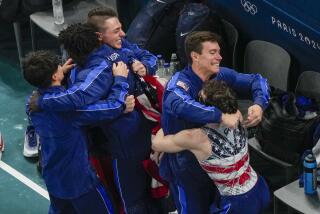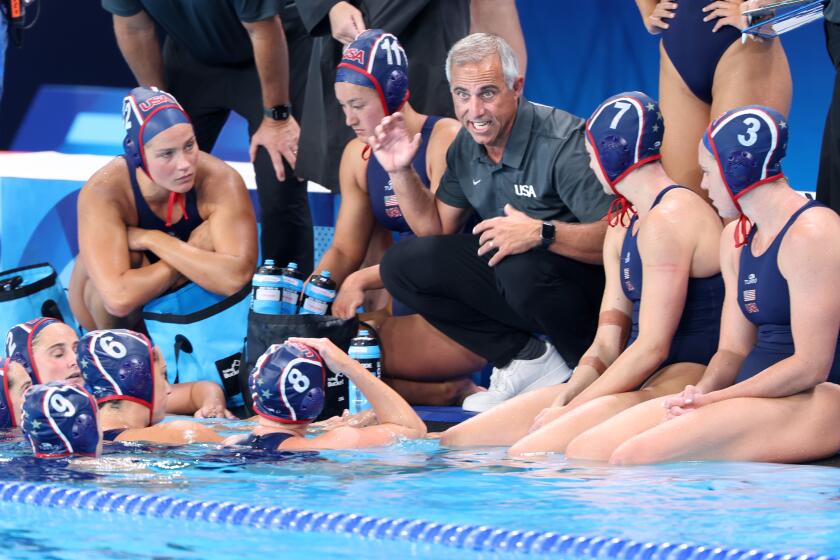Sochi Games: U.S. speedskaters may swap suits after disappointments
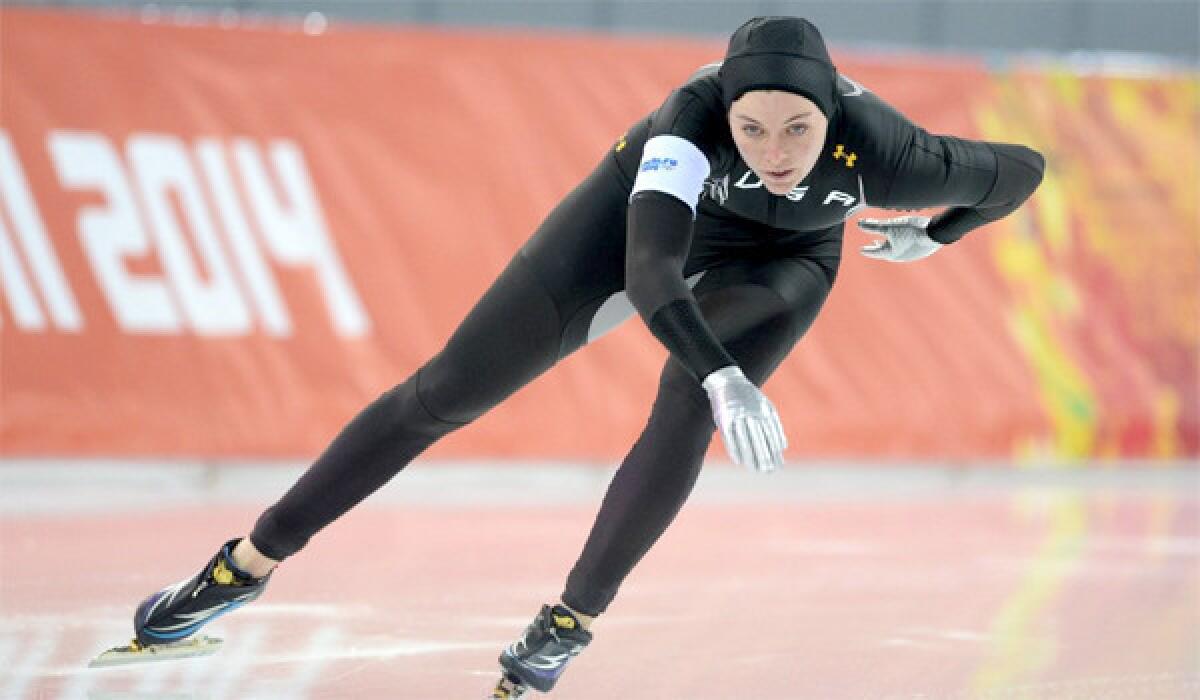
SOCHI, Russia — After disappointing results that have seen its speedskaters on the verge of their worst Olympic performance in three decades, U.S. Speedskating is working to dump the most noticeable factor it controls — its racing suit.
Under Armour heralded the Mach 39 — the much-hyped suit the apparel company said it developed with the help of defense contractor Lockheed Martin — as the fastest speedskating suit in production.
In Sochi, through half of the races, U.S. speedskaters have yet to win a medal.
FRAMEWORK: Best images from Sochi
On Thursday, U.S. Speedskating took steps to cover a meshed vent along the spine of the suit worn by Heather Richardson, the top-ranked women’s skater in the world. She finished seventh in the 1,000 meters Thursday.
Hours later in Sochi, officials with the U.S. national governing body were working to get approval for American skaters to race in suits worn during World Cup competition, multiple sources told the Chicago Tribune. Six events remain on Sochi’s speedskating calendar.
World Cup suits also were made by Under Armour. Some skaters brought their old suits with them to Sochi; the rest would have to be delivered.
“I know everyone’s working around the clock to try and fix the problem,” said Brian Hansen, who finished ninth in Wednesday’s 1,000 meters. “If the entire U.S. team is underperforming compared to our potential — literally everyone — you can only look at so many factors. Is it the suit? Is it our preparation?
“The suit’s the easiest thing to fix.”
U.S. Speedskating President Mike Plant confirmed replacing suits is being considered but downplayed the potential swap, likening the situation to changing skiing equipment in the middle of competition.
“We have a lot of people asking a lot of questions about what the best combinations are for us now,” Plant said. “No decision yet.”
When asked whether suits will be replaced, Hansen’s coach Nancy Swider-Peltz — who is not part of the national team coaching staff — said “there was working being done” to use the old suits in Sochi.
Under Armour’s Kevin Haley stood behind the new suit, saying in a statement: “The Mach 39 is the most scientifically advanced and rigorously tested suit ever featured in Olympic competition. While a multitude of factors ultimately determine on-ice success, many skaters have posted personal-best sea-level heat times, split times or race times this week, and we’re rooting for that to translate into medals over these next couple of days.”
Said Hansen: “They put all sorts of bells and whistles on the suit.” U.S. skaters racing here have started out fast, based on splits. Most said afterward they were surprised at their times.
“I was on a killer [lap] the first six to 800 meters and then just kind of locked up,” said Brittany Bowe, the world-record holder in the women’s 1,000.
After six events — three each for men and women — the best finish for the United States is Richardson’s seventh place in the 1,000. On Wednesday, Shani Davis — the world’s top-ranked men’s skater — finished eighth, well off his world-record time, ending his bid to become the first American man to win three consecutive golds in the same Olympic event.
Two days earlier, Tucker Fredricks — considered the top pure sprinter in the U.S. — finished 26th in the 500.
“For whatever reason, right now, we’re getting skunked,” U.S. coach Ryan Shimabukuro said. “I really don’t know. I’m at loss for words right now. Definitely didn’t expect [this]. Competition writes its own story. ... Results are on the board.”
The suit unveiled for Sochi was not used in competition before the Games. Skaters didn’t see the finished product until after making the Olympic team in December’s U.S. trials.
“None of us were given a chance to race in it,” Hansen said. “With this skin suit we don’t have any results from it — at least not any positive results.”
Nearly the entire contingent of the 17 U.S. speedskaters spent 10 days before the Olympics training in Collabo in the mountains of northern Italy.
The strategy is common: train at higher altitudes to prepare for competition at sea level. However, unlike the U.S. team’s facilities in high-altitude Salt Lake City and at Sochi, the Italian track was outdoor and windy. It also did not have a stationary bike to warm up.
Ryan defended the decision and said training was done there before the Turin Games in 2006. Other teams in Sochi also trained at Collabo before these Games.
Speedskating competition takes a day off Friday. When the men resume Saturday in the 1,500, will Davis, Hansen and their teammates being wearing the Mach 39? Is the race suit the U.S. team’s biggest problem?
“I’m not going to comment on that,” Shimabukuro said.
Chicago Tribune reporter Philip Hersh contributed to this report.
Twitter: @jaredshopkins
More to Read
Go beyond the scoreboard
Get the latest on L.A.'s teams in the daily Sports Report newsletter.
You may occasionally receive promotional content from the Los Angeles Times.
